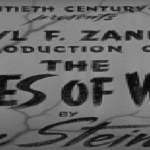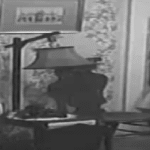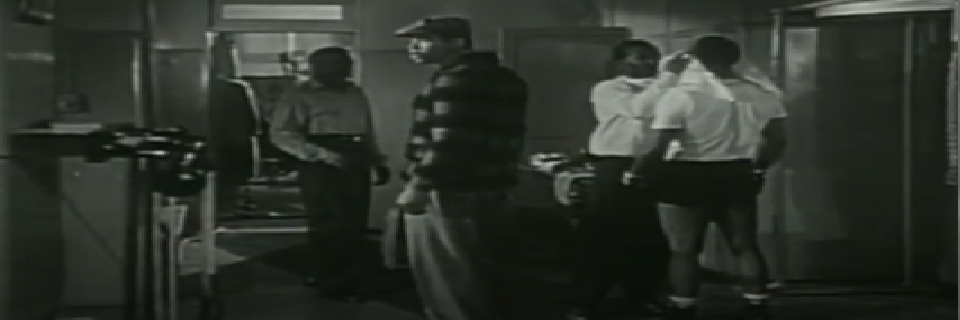The Joe Louis Story, released in 1953 and directed by Robert Gordon, is a biographical drama that recounts the life and career of legendary American boxer Joe Louis, affectionately known as the “Brown Bomber”. As one of the most celebrated athletes in boxing history, Louis’s rise from poverty to global fame is presented as a tale of perseverance, discipline, and national pride, set against the backdrop of racial inequality and the social tensions of early 20th century America.
The film opens in the rural Deep South, where Joe Louis Barrow is born to poor African-American parents. From the beginning, the hardships of poverty and systemic racism shape his early life. His family moves north to Detroit in search of better opportunities, part of the broader migration of black families leaving the segregated South. Life in the city is not easy, but it offers the young Louis a new environment, and it is here that his future as a boxer slowly begins to take shape.
Louis is depicted as a quiet and respectful boy, more interested in music than fighting at first. He takes violin lessons, and his mother hopes he will follow a respectable and non-violent path. However, fate has other plans. His interest in boxing is sparked when he visits a local gym, and although he initially hides his new passion from his family, his natural talent becomes immediately apparent.
As he begins to train, Louis is taken under the wing of experienced boxing trainers who see his potential. Among these mentors is Jack “Chappie” Blackburn, a former boxer himself, who plays a crucial role in refining Joe’s skills and instilling in him the discipline and strategy needed to excel in the sport. Alongside him is his manager, John Roxborough, who carefully guides Louis’s career and image, emphasising dignity, humility, and restraint. Roxborough is determined that Louis will succeed not only as a boxer, but as a symbol of African-American respectability and excellence.
Louis’s early professional career is marked by an astonishing series of victories. He rises rapidly through the ranks, defeating opponents with a combination of speed, power, and calm precision. The film shows his meteoric ascent through the heavyweight division, capturing the excitement of his early fights and the growing attention of the public. Throughout this period, Louis remains humble and soft-spoken, a sharp contrast to the flamboyant or controversial personas often found in the boxing world.
The story takes a dramatic turn when Louis faces Max Schmeling, a former world champion from Germany. Their 1936 bout is one of the most pivotal moments in the film. Schmeling defeats Louis in an upset, exposing the young fighter’s weaknesses and delivering a blow not only to Louis’s ego, but to the morale of many African-Americans who had come to see him as a symbol of hope. The film portrays Louis’s defeat as a humbling moment, one that leads to deeper self-reflection and renewed dedication to training.
Following this loss, Louis trains harder than ever, determined to earn a rematch. The film also delves into the broader political climate of the time. By the late 1930s, Nazi Germany is rising, and Schmeling, though not personally aligned with the regime, becomes a symbolic figure. When the rematch is finally set for 1938, it is billed not only as a boxing match but as a contest of ideologies. For many Americans, particularly African-Americans, Louis’s fight becomes a battle between democracy and fascism, equality and racism.
In a moment of cinematic and historical triumph, Joe Louis defeats Schmeling in the first round of their second fight. The film captures the jubilation that follows, with scenes of celebration across the United States. This victory cements Louis’s place in history, not just as a champion in the ring, but as a national hero whose success transcends sport.
Following this high point, the film explores the later years of Louis’s career. He successfully defends his heavyweight title for over a decade, an unprecedented feat. Yet, the toll of fame, financial strain, and the pressures of being a racial pioneer begin to weigh on him. Louis’s life is not without difficulty, and the film does not shy away from depicting the challenges he faces after his prime, including tax problems and the struggle to find a role after retirement from boxing.
Despite these hardships, the film concludes on a note of admiration and reverence. Joe Louis is presented as a man of quiet dignity, a fighter who never sought to provoke or incite, but who inspired millions through his determination and grace under pressure. His contributions to both sport and society are recognised as nothing short of historic.
Legacy and Themes
The Joe Louis Story is more than a sports biopic. It is a portrait of a man who carried the weight of a nation’s hopes, especially those of black Americans, during a time when racial segregation and prejudice were deeply embedded in the fabric of society. Louis’s victories inside the ring offered symbolic victories outside of it, and his quiet confidence stood in stark contrast to the racial caricatures often imposed on black athletes of the era.
The film was released just a few years after Louis retired, which gives it an almost documentary quality in terms of its immediacy and relevance. It seeks not only to entertain but to educate, offering a tribute to a man who achieved greatness through hard work and moral character. While the storytelling style reflects the conventions of 1950s American cinema — straightforward, moralistic, and somewhat idealised — it manages to convey the essential humanity of its subject.
The decision to cast Coley Wallace, a boxer with a striking resemblance to Louis, in the leading role, adds a degree of authenticity to the fight scenes. Wallace’s performance captures the physicality of the sport while maintaining the restrained, respectful tone that defines Louis’s public image.
The film also highlights the importance of mentorship, family, and community. Louis’s success is shown not as an individual triumph alone, but as the result of collective belief and support. From his mother’s faith to the guidance of his trainers and managers, Louis is surrounded by figures who shape and support his journey.
Ultimately, The Joe Louis Story presents a compelling and deeply respectful account of one of boxing’s most significant figures. It honours not just his athletic achievements, but the grace with which he bore the burdens placed upon him. It remains a powerful reminder of sport’s capacity to bridge social divides and to create heroes whose legacies endure far beyond the arena.







